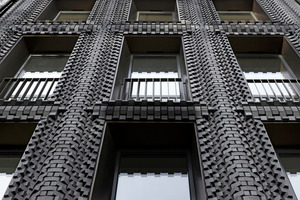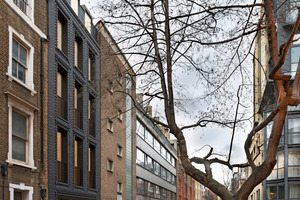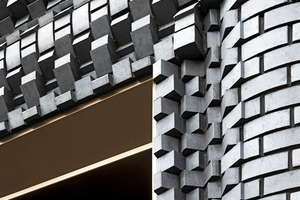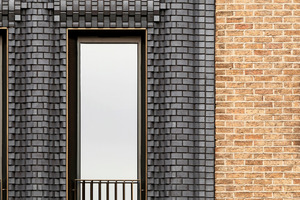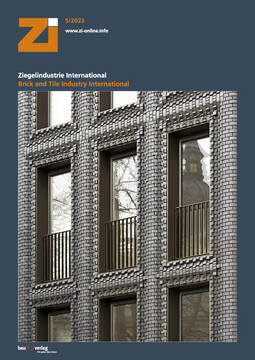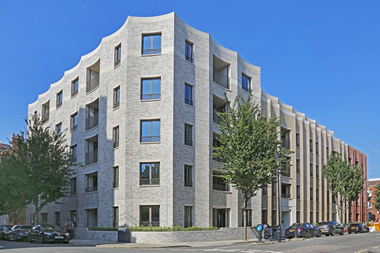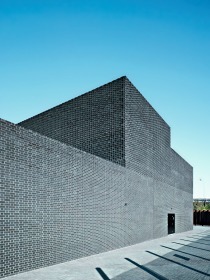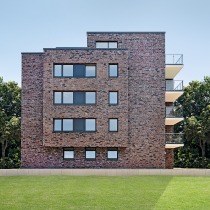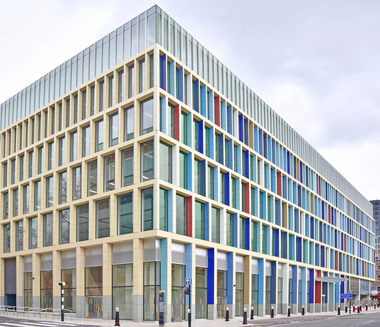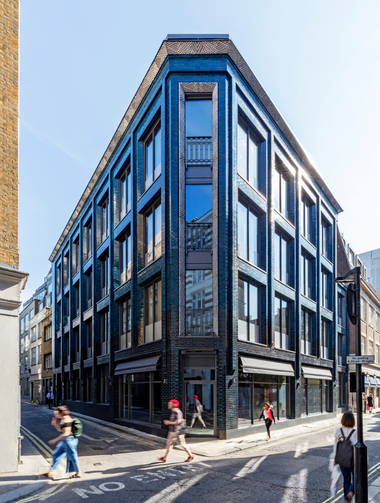Façade with brick cogwheels -
The Interlock by Bureau de Change architects
Located in London’s Fitzrovia at the crossing of Riding House Street and Wells Street sits The Interlock, a new five-storey mixed-use building designed by Bureau de Change architects for developer HGG London.
Riding House Street hosts an extraordinary breadth of architectural styles. From John Nash’s All Souls church at its most easterly point, the street skips haphazardly from 19th century terraces to post-war commercial buildings; concrete slab structures and 20th century apartment blocks. The street’s piecemeal aesthetic is unified by the use of brickwork which serves as the façade material of choice.
The Interlock absorbs this history and responds by taking the proportions of the neighbouring 19th century terrace, and recasting its brick façade to create a building of uncertain heritage – one that is simultaneously historic and contemporary, familiar yet foreign.
Abandoning the traditional dimensions of London brick, a collection of 44 misshapen and seemingly un-stackable clay blocks were developed. The patterns visible across the surface are informed, in part, by the interactions between materials and structure. The bricks appear to lap up against glazing, swell and bow between floors and are inset frame-like to denote the building’s perimeter.
For passers-by, the bricks appear to morph and twist like cogs. By modelling the facade in 3D, each facet could be individually adjusted to meet structural and fabrication requirements without diluting the integrity of the surface form.
Staffordshire Blue Clay was selected as a contrast to the areas existing brickwork. The marl clay was set into 14 hand-crafted steel molds and fired in oxidation to create the matt blue finish. After firing, these 14 ‘parent’ bricks were divided to form the 30 ‘offspring’. Construction of the 5,000 block landscape took place over three months. The fabrication team used 1:1 printed templates that set out the number, typology and location of each brick. When collated on site, these 188 templates appeared like a construction manuscript, with each brick a different note to lay.
The project represents a shared vision between developer and architect to taking London’s architecture and re-approaching it in a way that brings something new to the streetscape.

